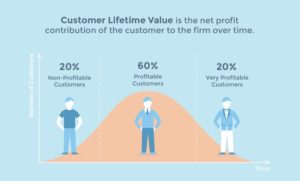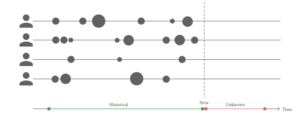
Transform Your Supply Chain Planning and Marketing Strategies with Google Cloud and SAP Integration

Transform Your Supply Chain Planning and Marketing Strategies with Google Cloud and SAP Integration
October 10, 2019 | Divya Khare
Blog / Everything you need to know about CLV
Customer Lifetime Value is a metric that indicates the total revenue a business can reasonably expect from a single customer account. It considers a customer’s revenue value, and compares that number to the company’s predicted customer lifespan. Businesses use this metric to identify significant customer segments that are the most valuable to the company.
This is something that customer support and success teams have direct influence over during the customer’s journey. Customer support reps and customer success managers play key roles in solving problems and offering recommendations that influence customers to stay loyal to a company — or to churn.

Your customers aren’t just worth the amount of money they spend on your business today. They have future value if you’re able to retain them as customers. Customer lifetime value is important because, the higher the number, the greater the profits. You’ll always have to spend money to acquire new customers and to retain existing ones, but the former costs five times as much.
When you know your customer lifetime value, you can improve it. Work on retaining your existing customers through email marketing, content marketing, Account-Based marketing, social media marketing, and more. You still want new customers, but don’t forget about the old ones.
CLTV is the single most important metric for understanding your customers. CLTV helps you make important business decisions about sales, marketing, product development, and customer support. For example:
Several different methods exist to calculate LTV. The customer lifetime value can be either historic or predictive. In other words, you might want to calculate LTV based on actual purchases over the years or based on what you predict customers will spend.
Regardless, you need to know the average profit margin for purchases, the amount you spend to acquire a customer — customer acquisition cost — and the length of your relationship with customers.
The way you calculate customer lifetime value can also vary based on your business model. For instance, it’s easier to calculate LTV if you have a subscription model than if you’re in e-commerce. That’s because sales become more predictive.
Companies like BarkBox and ButcherBox charge the same amount every month for their deliveries, and their customers pay monthly or annually. It’s harder to predict how often a customer will return to buy new socks from your online retail storefront.
Many companies predict CLVs only by looking at the total monetary amount of sales, without understanding context. For example, a customer who makes one big order might be less valuable than another customer who buys multiple times, but in smaller amounts. CLV modeling can help you better understand the buying profile of your customers and help you value your business more accurately. They can also help you can prioritize your next actions, such as the following:
-> Decide how much to invest in advertising.
-> Decide which customers to target with advertising.
-> Plan how to move customers from one segment to another.
Three important inputs into CLV models are recency, frequency, and monetary value:
The following diagram shows a succession of past sales for a set of four customers.

The diagram illustrates the RFM values for the customers, showing for each customer:
We at Pluto7, are a premier Google Cloud Partner specializing in transforming marketing activities of Companies with AI driven solutions. Our work helps companies increase the LTV of their customers , deliver a seamless omnichannel buying experience and use predictive insights to plan for a more profitable future. If you want to know how to build a robust and scalable AI-driven marketing engine for your business get in touch with us.